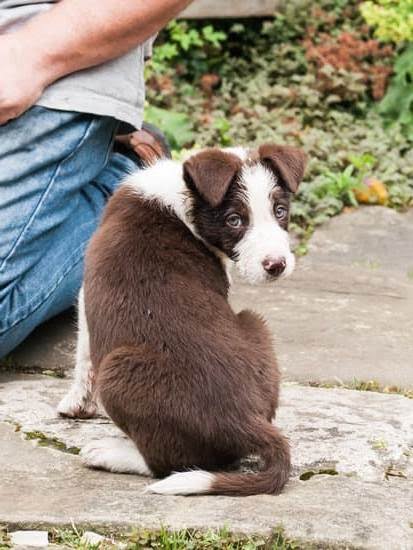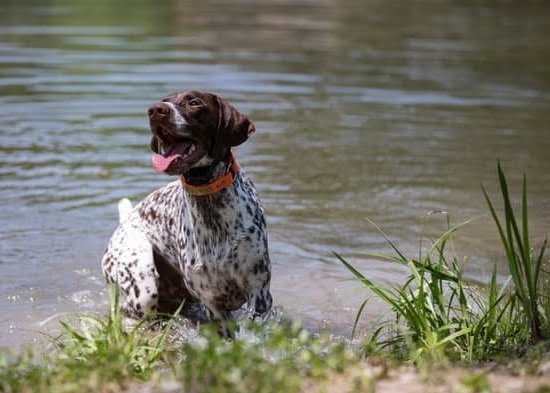Introduction
A cadaver dog is a specialized kind of search and rescue dog trained to locate corpses, and sometimes missing people. They’re trained to follow their handlers’ commands given during a “search pattern.” This search pattern helps them find the scent of decomposing remains and alert their handler when they’ve located it. Cadaver dogs can also be trained to identify smaller scents, such as human blood or ammunition residue. These dogs are commonly used by police forces and other search and rescue teams to quickly locate the location of bodies in a certain area without having to waste hours searching visually or utilizing radar technology.
Assess Your Dog’s Suitability as a Cadaver Dog
Before you begin training your dog to be a cadaver dog, it is important to assess how suited they are to the task. A good cadaver dog should have an exceptional sense of smell and a natural curiosity. They should also have basic obedience skills such as following directions, staying near their handler, and responding quickly to commands. Additionally, they should demonstrate stable energy and composure when in public spaces. A good degree of physical fitness will help them remain effective on longer searches. High-drive dogs that are highly motivated by rewards make great cadaver dogs; similarly, if your dog is content to work independently and has no problem with solitude or darkness then they could have a talent for cadaver work. Once you’ve assessed your Dog’s potential suitability for cadaver work, you can move forward with training using positive reinforcement methods.
Define Your Training Goals
When training a cadaver dog, it is important to determine what level of detection and training you would like to achieve. First, consider the type of search (such as water or land) you will be doing and the environment you will use for your dog’s training. Then, think about the tasks you would like your cadaver dog to be able to perform. These tasks can include alerting handlers when they have located human remains, identifying certain smells associated with human decomposition, locating specific targets such as burial sites and objects, and signaling to indicate onset of new stages in decay or evidence of presence or absence of human scent. Knowing these goals can help create a plan for longer term objectives that the handler can strive for together with the dog.
Developing Your Dogs Natural Instincts
One of the most important aspects of training a dog to be a cadaver dog is to develop their natural instincts. Depending on the breed and age of your dog, different techniques may be used. Start by introducing scents that dogs naturally gravitate toward in order to get them to focus on the task at hand. Some sources suggest rubbing your hands with dirt or an object that has a scent related to death (e.g., decomposed tissue, bone dust etc.). In addition, exposing your dog to familiar smells such as decaying leaves, rotting wood or fish can help build their association with finding hidden corpses.
During each training session, it’s important to reward your pup when they detect the signal and don’t allow them to fatigue too quickly, so keep sessions short but frequent. Additionally while you train them indoors, try slowly introducing outdoor stimuli such as birds flying by or other noises that may distract them from focusing on their task. As mentioned earlier, it’s essential for owners to know when a pup has ‘hit’, or detected the smell; behavioural clues can include restlessness and pawing around the area where the scent was found. With encouragement and positive reinforcement a pup should eventually be able to detect even faint scents and alert their handler when they do find something.
Create a Positive Training Environment
It is important to create a positive environment when training your dog to be a cadaver dog. You want to ensure that they are comfortable and relaxed while they learn how to scent detect. Start off with lots of praise and treats whenever they do something correctly. Give them their favorite toy or reward them when they make progress so that it encourages them to keep trying. This will help build up their confidence which is essential for successful cadaver dog training. Additionally, keep the sessions short and fun so that your pup does not get too overwhelmed by the process. Introduce distractions such as toys, loud noises, different smells and environments so that your dog can become accustomed to working in all types of settings. Make sure there are frequent breaks throughout each training session and also regularly monitor your pup’s behavior as you want to avoid any signs of stress or exhaustion. Following these steps will help you create a positive atmosphere where both you and your pup can enjoy learning together in order for your pup to become an amazing cadaver dog!
Establish the Proper Structure and Obedience Training
Training a dog to be a cadaver dog requires significant structure and obedience training. Start training the dog as soon as possible, while they are still a young puppy. They should be taught basic commands such as sit, stay, and come. Establishing a strong foundation of obedience will make it easier to train the pup for more specific tasks later on. Crate training is also important, as this will help create routines and consistency so your pup can learn quickly and accurately when it comes time to begin cadaver-specific training. Teaching your dog to walk at heel on leash is also essential as this gets them used to working as a team with their handler when they are out in the field. It is beneficial to reward desired behaviors with treats or other forms of positive reinforcement; while doing so will help keep their attitude upbeat and motivated when it comes time to start searching for specific odors. Lastly, familiarizing your puppy with different surfaces, people, and places will go a long way in creating an alert and confident cadaver dog that can easily handle any search situation that may arise.
Laying the Foundation for Cadaver Dog Training
When beginning to train your dog for cadaver work, it is essential to establish a strong foundation in obedience and behavior. Establishing basic cues like “sit”, “stay”, “come”, “leave it” and “drop” will help reinforce your commands and make the next steps of training much easier. Additionally, it’s important to slowly acclimate your canine companion to different environments and situations outside of the home such as places with lots of people or loud noises. This will teach them how to remain relaxed in these areas even when their senses are overloaded.
In addition to laying the foundation for obedience and behavior, introducing various objects and toys that represent human remains is one way you can start teaching your dog what indicates a cadaver scent. You may want to use items like cotton swabs soaked in human blood, used clothing sprayed lightly with essence oils that mimic human decomposition, or even something like an exposed bone covered with cloth. Do not give the treats while they are sniffing the object; instead save those rewards until they get back into position after finding it. This exercise can help strengthen the link between searching for cadaver scent and getting their reward which will be important later on.
Introducing Your Dog to the Scent of Decomposition
The first step in training your dog to be a cadaver dog is introducing them to the smell of decomposition. To do this you can start by obtaining the scent of decomposition from items such as chemically treated hides or a dog corpse. Place these in an area that’s easy for the dog to access. As soon as your dog has gotten close enough to smell it, reward them with a treat and show lots of positive reinforcement so that they become comfortable with the odor. You can also play hide and seek games with these scented items, helping your pooch get used of locating and identifying this particular scent. As you progress, gradually introduce stronger and stronger scents or mixtures of odors until your canine is happily able to locate these smells accurately and consistently
Constructing Obedience Exercise to Supplement Training
When training your dog to be a cadaver dog, it’s important to supplement their practice with obedience exercises to ensure their complete understanding of the commands and smells. This can include basic commands such as ‘sit’, ‘stay’, and ‘come’. It is reiterated how imperative it is for the cadaver dog handlers to establish those basic skills from when the pup is first adopted. The consistency of implementation will help build trust, communication and a stronger learning-environment for the pup. In addition, more difficult commands such as ‘search’ can be implemented in order to further increase understanding of expected behavior when on the job. These exercises can include creating obstacle courses or hiding treats around various objects which allows dogs to use their sense of smell before going into an inactive state once they successfully identify something or someone. It is important that dogs know where they should alert handler’s whether it being through barking or another signal that they’ve completed the task successfully. Like with humans, repetition is key! The higher the amount of times your pup understands what’s expected out of them even if they don’t always succeed at first, will translate well into your pup becoming an effective and accurate cadaver dog over time.
Acclimating Your Dog to the Setting and Environment
Training your dog to become a cadaver dog requires them to get used to the various settings and environments where their job might be necessary. To begin, acclimate them to loud noises and equipment used for search and rescue such as backhoes and generators. Make sure that your dog is comfortable around these new sounds. Place items around the training area that emit strong scents like human clothing or barbeque sauce. Allow them plenty of time to investigate these items already worn by people or saturated with human scent. Once they seem comfortable, introduce simulated searches with human volunteers. Allow them ample time exploring before introducing real-life scenarios with authentic tasks of finding live people or cadavers in urban, wilderness and water environments. Train at times of day most resembling when you think a search would actually take place for best results for both you and your pup!
Utilizing the Power of Positive Reinforcement
Cadaver dogs are trained to have an extremely specific job: finding human remains. While this is an important job, it can also be a very challenging task, but there are ways to help simplify it. Using the power of positive reinforcement is one of the most effective strategies for teaching your dog how to be a cadaver dog. Positive reinforcement is any kind of reward or form of encouragement given to your dog after they complete desirable behaviors or even try something new. This could come in the form of verbal praise, treats like food or toys, and physical affection such as petting and rubbing. Your goal with positive reinforcement is to associate desired behaviors with a positive experience in order for your pup to understand what’s expected from them – no matter how difficult.
When training your pup, you should create scenarios that mimic those in which they will eventually be working; for example: searching through piles of leaves and brush for hidden items, familiarizing themselves with different scents outdoors, and learning how to detect minute particles or odors in air from across distances. Always make sure that you thoroughly reward them after they complete each task correctly; this will create a strong understanding between you and your pup that good behavior leads to great rewards! Over time as they become more proficient in their skills, challenge them further by introducing more difficult tasks; this could mean if searching indoors then changing environments periodically or if searching outdoors then gradually increasing the size of search areas. No matter what difficulty level you decide on, always provide plenty of feedback along the way so that your pup continues to understand their progress!
Working with a Certified Cadaver Dog Trainer
If you want to properly train your dog to be a cadaver dog, it is important to work with a certified cadaver dog trainer. A trainer will teach your canine all the skills they need in order to become an effective and reliable cadaver dog. These trainers can be found both online and in person depending on where you live and their availability.
The initial training process typically takes anywhere from 3 to 5 weeks and teaches basic cadaver dog commands such as ‘search’, ‘track’, ‘alert’ and ‘scent discrimination’ among others. During this time you can also learn how to effectively handle your animal during search-and-rescue operations. The trainer will also show you how to properly read your canine partner’s body language so that you are confident in issuing commands or rewards during searches or investigations.
It is important for you and your dog to practice the techniques learned with the certified cadaver dog trainer long after the initial course has finished in order for them to remain proficient at these skills. This requires some dedication from you as the handler, but the benefits of having a well-trained cadaver detection K9 are immense. With frequent structured practice sessions, it will help increase confidence between handler and K9 while creating reliable results during searches or investigations. It is also important that handles regularly reinforce good behaviors as well correct any unwanted behavior as soon as possible in order for their canine partner not just succeed but also excel at their tasks as a cadaver detection K9.
Properly Equipping and Caring for Your Cadaver Dog
In order to properly equip and care for your new cadaver dog, there are certain steps you should take. First, it is important that the dog undergoes extensive and rigorous training in order to be an effective cadaver dog. This should include obedience classes as well as training specific to detecting human remains at both short and long distances. Additionally, the training should incorporate proper commands like ‘stay’ and ‘come’ which will help in keeping the dog safe while it is working on a situation.
Secondly, it is also important to make sure that the dog is physically fit and healthy enough to complete its field work. Proper exercise such as regular jogs can help with developing strength and endurance so that the dog can effectively complete its tasks over long periods of time without getting tired or injured. Providing appropriate nutrition can also be beneficial for a cadaver dog, so making sure the pet receives meals high in protein content along with any necessary supplements can give your companion some additional energy and nutrients needed when out on a case.
Finally, addressing any potential mental health issues with your cadaver dog is crucial in order to keep them calm while working on a scene. While many believe that dogs are naturally ready for work all the time, it is essential that they be provided with moments of rest during long shifts or stressful cases in order for them stay focused on their task at hand without being overwhelmed. If necessary, look into additional tools such as different collars or treats that have been designed specifically for helping anxious animals cope with stress during difficult fieldwork scenarios.
Maintaining Your Dogs Training
Once you have trained your dog to be a cadaver dog, it is important to keep their skills sharp. Cadaver dogs should have regular drills and tests to ensure that they can perform the required tasks on command. Some recommended activities include:
• Make sure to practice searching in different locations with varying scents to challenge the dog. This could mean having team members bring different materials, toys, or articles of clothing which have been previously exposed to decomposing human remains or tissue into open fields or other training sites.
• Allowing the handler time to work with the dog while hiding items around a designated area will also help build confidence and focus in the animal.
• Testing simulations are often useful in helping give dogs experience working with mock-up scenes of multiple victims or suspects as well as detecting smaller items such as pocket knives and bullets from a distance. Taking your dog out for walks in parks, woods, cemeteries, etc., can also help them get used to new environments and smells thus making them more adaptable.
• Finally any cadaver dog handler should ensure proper nutrition for their companion by feeding it high quality food and plenty of water throughout its training sessions. Properly hydrating your canine friend can result in faster search times, better tracking capabilities, and increased alertness when smelling for decomposing bodies.
Wrapping It Up
Training a dog to be a cadaver dog, or scent detection dog, is an involved process that requires both positive reinforcement and specialized tools. The first step in training a canine for cadaver work is to get them comfortable with the smells associated with decomposing bodies. This can be done by giving them access to human skin cells, blood samples, and other substances that are common components of a corpse. Rewarding them with praise and treats when they identify the different smells helps to reinforce their learning process. Additionally, dogs should also learn hand signals (e.g., pointing) that direct them in the right direction and indicate that they have been successful in their search.
During this training period it’s important to introduce your pup gradually to simulated searches and more difficult tasks such as debris piles and water sources; warming them up slowly will prevent any psychological trauma. Furthermore, proper socialization of a cadaver dog needs to occur while they are early on in the development cycle so expert instruction on how to properly interact with human remains is recommended throughout the entire tenure of your training sessions. Once your pup has mastered all of these skills and is comfortable working in varied environments, then you should conduct live-search drills simply so you know for certain if/when your pooch does/does not detect something within a blighted area or vegetation where you’re searching for human remains. With consistency and recognition for their successes, your canine companion will grow accustomed to working as a cadaver dog over time— becoming an invaluable resource to law enforcement agencies nationwide.

Welcome to the blog! I am a professional dog trainer and have been working with dogs for many years. In this blog, I will be discussing various topics related to dog training, including tips, tricks, and advice. I hope you find this information helpful and informative. Thanks for reading!





